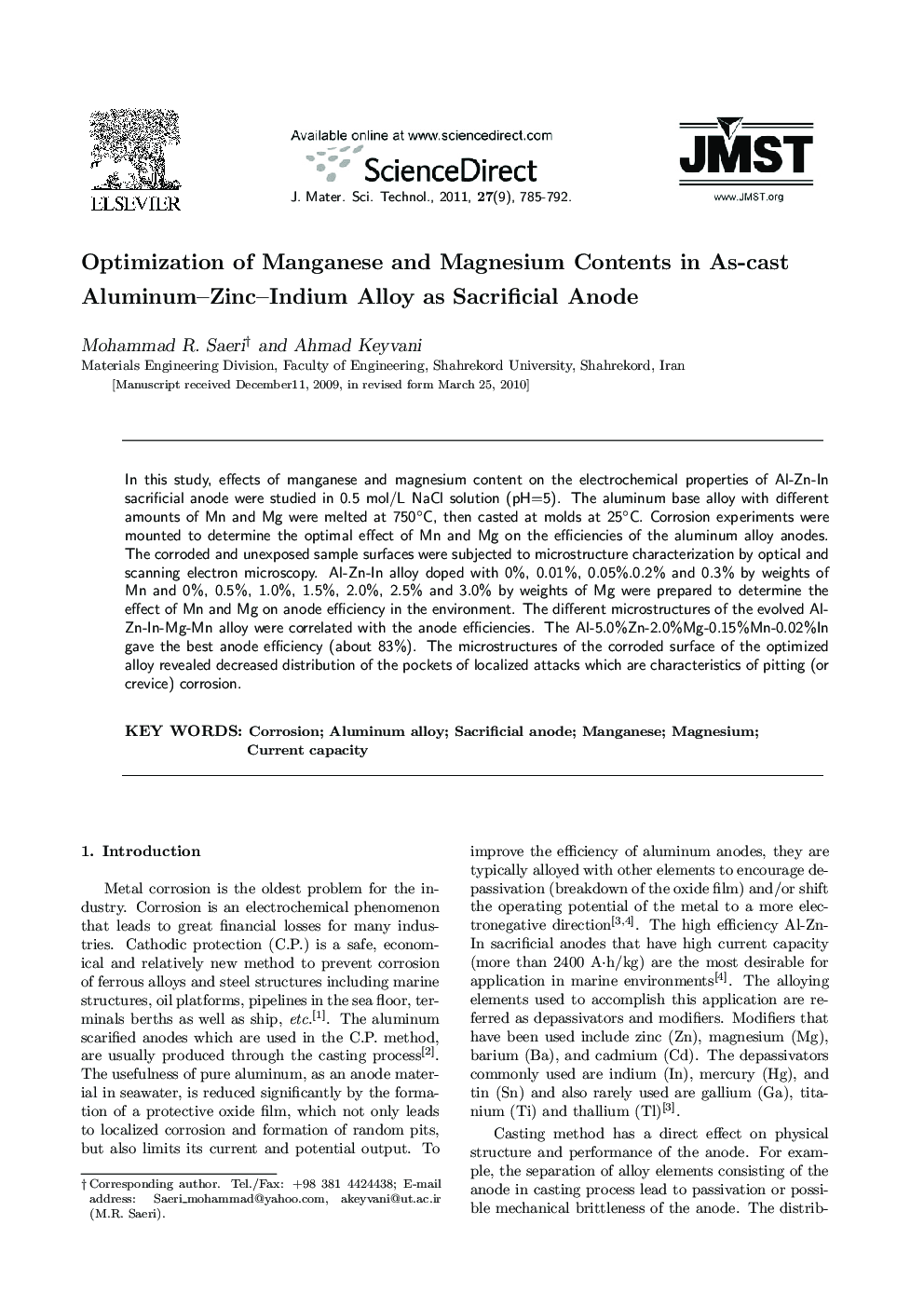| Article ID | Journal | Published Year | Pages | File Type |
|---|---|---|---|---|
| 1556443 | Journal of Materials Science & Technology | 2011 | 8 Pages |
Abstract
In this study, effects of manganese and magnesium content on the electrochemical properties of Al-Zn-ln sacrificial anode were studied in 0.5 mol/L NaCI solution (pH=5). The aluminum base alloy with different amounts of Mn and Mg were melted at 750°C, then casted at molds at 25°C. Corrosion experiments were mounted to determine the optimal effect of Mn and Mg on the efficiencies of the aluminum alloy anodes. The corroded and unexposed sample surfaces were subjected to microstructure characterization by optical and scanning electron microscopy. Al-Zn-ln alloy doped with 0%, 0.01%, 0.05%.0.2% and 0.3% by weights of Mn and 0%, 0.5%, 1.0%, 1.5%, 2.0%, 2.5% and 3.0% by weights of Mg were prepared to determine the effect of Mn and Mgon anode efficiency in the environment. The different microstructures of the evolved Al-Zn-ln-Mg-Mn alloy were correlated with the anode efficiencies. The AI-5.0%Zn-2.0%Mg-0.15%Mn-0.02%ln gave the best anode efficiency (about 83%). The microstructures of the corroded surface of the optimized alloy revealed decreased distribution of the pockets of localized attacks which are characteristics of pitting (or crevice) corrosion.
Related Topics
Physical Sciences and Engineering
Materials Science
Materials Chemistry
Authors
Mohammad R. Saeri, Ahmad Keyvani,
